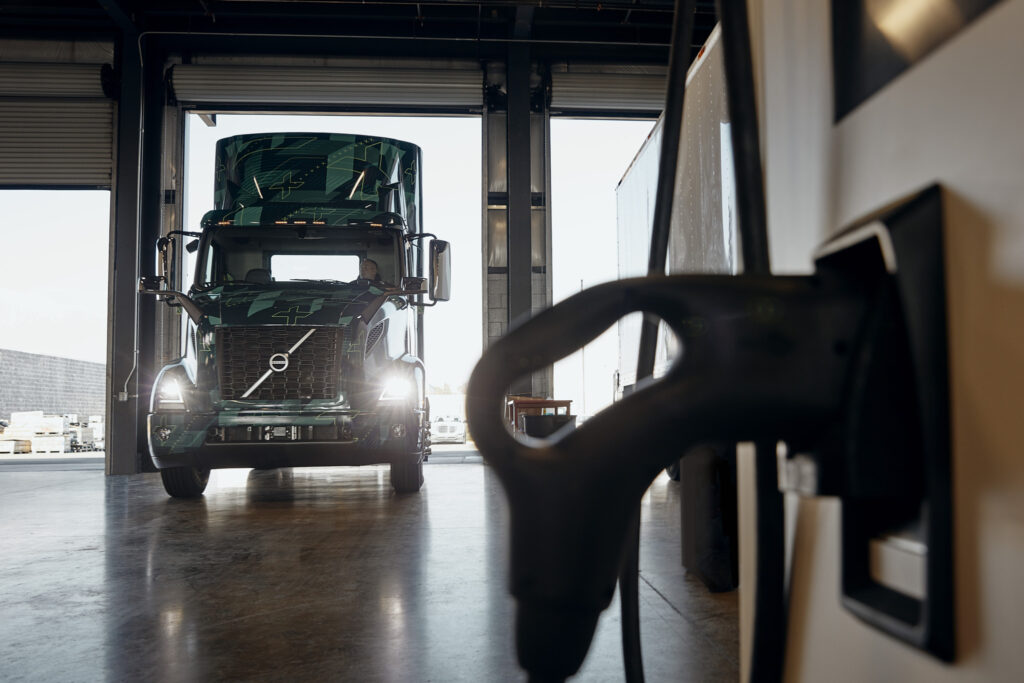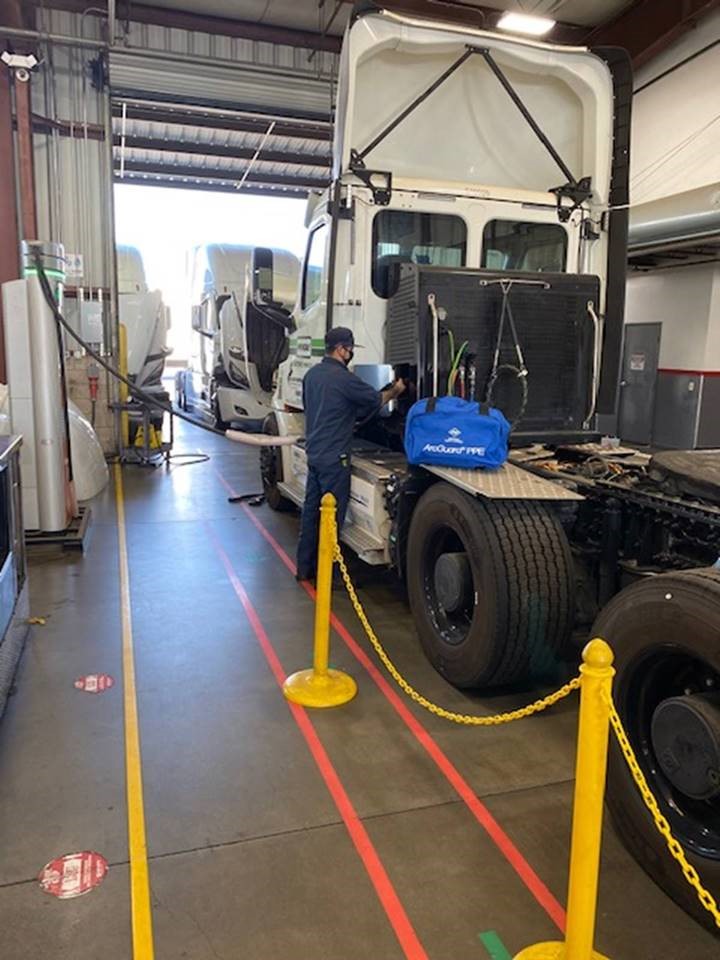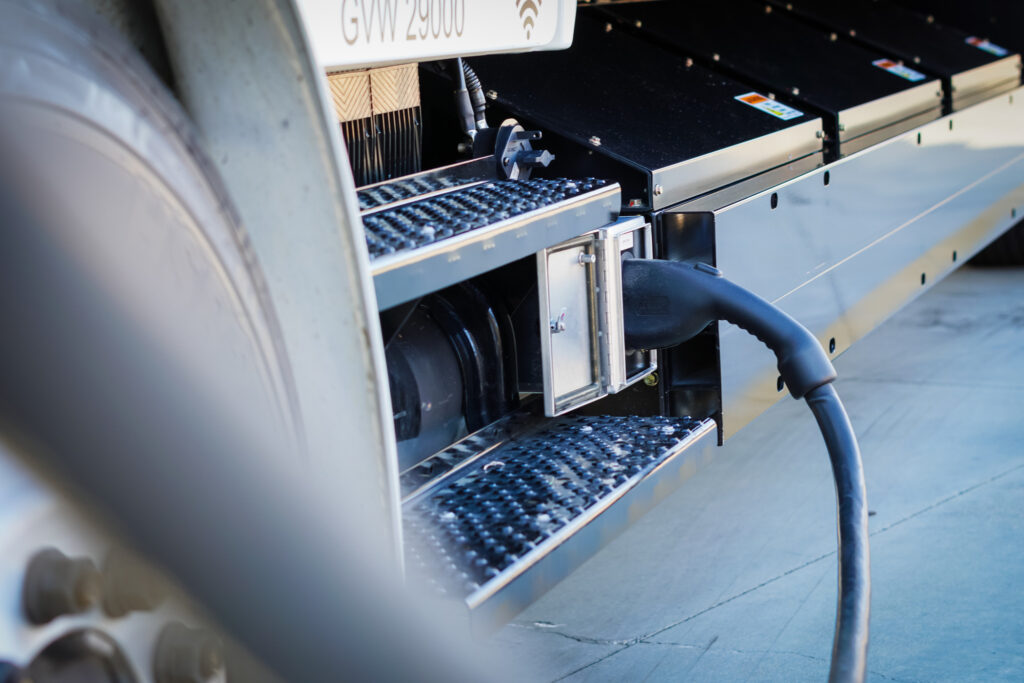Preparing your shop to service electric trucks
As the buzz about electric trucks continues to build, early adopters are rethinking their shop tooling, configurations, and technician training requirements to accommodate such vehicles.
While the first fleets to deploy electric trucks are largely relying on dealers or full-service leasing companies to maintain those trucks, there may come a time when they wish to pull that work in-house. But the shop of tomorrow will look vastly different than today’s, from the hand tools used by technicians to the service bays designed to service electric trucks.
“I would say getting the charging stations ready has been a bigger operation than getting our technicians and tooling ready,” said Mike Hasinec, vice-president of maintenance with Penske Truck Leasing.
Penske has been setting up its Southern California dealerships to service electric trucks. Those locations have had 150 kW fast chargers installed in the yard, with smaller 10 kW chargers installed in dedicated service bays inside, so trucks can be charged while being worked on.

“A DC charger can usually be fitted if the shop has existing 480-volt three-phase power in the facility,” added Scott Barraclough, technology product manager for Mack Trucks.
Shops outfitted to service electric trucks will require dedicated service bays, but while initial use may be low, they should be versatile enough to continue servicing diesel trucks.
“Because of the throughput and size of our locations in Southern California, we can’t have one bay sitting to the side for a handful of vehicles that aren’t going to be in that bay each and every day,” said Hasinec.
Scott Zeppenfeldt is senior vice-president of operations with Velocity Truck Centers in Fontana, Calif., a Daimler Trucks dealer that has been supporting the truck maker’s Innovation Fleet of battery electric trucks. It has two dedicated bays, which can be converted to service electric trucks “within minutes,” he said.
“When a truck comes in, we have proper cones, chains, signage saying BEV work in progress, and a Level 2 charger that’s split between those bays,” he explained. The signage is essential to protect employees and others within the shop.
“This bay will need to have safety barriers that can be set up to restrict the designated electric vehicle service area to authorized personnel,” Barraclough added. “The barrier must include signage notifying others of the high voltage danger.”
Technician training
Technicians who will service electric trucks will require new tools, personal protective equipment and training. Hand tools must be insulated, and training will be needed. At Penske, the technicians chosen to receive this training were carefully selected.
“We reached out to the district service managers and handpicked the technicians to do this. Every one of the technicians has been very engaged and excited to learn about the new technology, which we all know is going to be much more prevalent in the near future,” said Hasinec.

Some of the tools technicians will have to work with include a digital multimeter, a tester to ensure the high voltage system has been decommissioned, a Shepherd hook to safely assist someone if something were to go wrong, arc shields to protect eyes, insulated gloves and shock jackets. Insulated tools include screwdrivers, sockets and wrenches. And lockout or tagout boxes will be needed for electrical connections to ensure they’re not reconnected by an unauthorized person, added Barraclough.
Velocity built its own technician PPE kits, at a cost of about US$2,000 each. “If you leave the charging piece out of it, the biggest dollar investment would be the technician training itself,” said Zeppenfeldt.
Like at Penske, Velocity found technicians were eager to be among the first to receive the training.
“We identified specific technicians to provide the training to, those that wanted to work on this technology and had a lot of excitement around it. You want to reward those technicians,” Zeppenfeldt said.
“Most of our technicians are excited. There was a line wanting to be the first go get training and have the ability to work on this new technology. The excitement around our shops has been very high.”
Crowds form around the electric truck bays when work is being performed, he noted.
Much of the training is provided by the OEM who builds the truck. For example, Mack trains dealer technicians through its Mack Trucks Academy.
“That training will include a deeper dive into electric powertrains and their components, how to perform maintenance tasks on those components, and how to accomplish this work in a safe manner with the correct, PPE and tools,” said Barraclough.
Velocity received support from Daimler engineers in Portland, Ore., and Germany, but now can perform any maintenance and repairs itself in its own shop.
Penske chose to do some high-level training across its entire staff, so everyone was aware the facility would be servicing electric trucks.
“Whether they were in the back office, retail or whatever the case may be, we educated them about the vehicles and brought about some awareness so they understand the dos and don’ts and they understand we have a dedicated bay in the facility marked for electric vehicles,” Hasinec said.
Timing of the training is also important. While work on shop updates may begin months before the first electric truck rolls in for service, training technicians too early can result in them forgetting much of what they learned.
Types of repairs
Once a shop has been set up to service electric trucks, the type of work required will also be different. Engine oil changes will be a thing of the past, and brake life should be extended thanks to regenerative braking. But that’s not to say regular maintenance won’t be required.
The cooling system, for example, is larger as it’s required to cool the battery packs. This means more cooling system connections to be inspected. The air compressor still requires oil, and the chassis will need to be greased. And lighting will continue to be a something for technicians to keep an eye on. But overall reliability has been good, so far.
“From the pre-production equipment we’ve been running, we’ve been pretty satisfied with what we’re seeing from a vehicle reliability standpoint,” said Hasinec, adding software challenges have been the biggest issues to date.
Zeppenfeldt agreed, adding “The trucks have performed very well. We have not had any systemic problems.”
He noted the turnaround time for a battery electric truck doesn’t vary much from that of a diesel, but axle or electromobility repairs can be comparable to engine work in terms of labor intensity.
The fleets earliest to deploy electric trucks so far seem content to let the OEM dealers or full-service leasing companies manage their EV service requirements, but that could change as they become more comfortable with the newer technology and invest in updating their own facilities.
“Initially, maintenance and repair activity specific to the electromobility components will be at the local dealer until fleet personnel can be properly trained to work on them,” Barraclough said. “Non-electromobility related work, such as brakes, tires, chassis lubrication, can and will still be performed in the fleet shops.”

The yard setup
In addition to a dedicated service bay, maintenance providers will need to consider how to lay out their yard.
“It takes a lot of planning,” Hasinec said, adding Penske’s facilities group began planning more than six months in advance. “There’s a lot of pre-work to really be prepared, so when you go to make that move and these vehicles become available from a production standpoint, we’ve done all our homework and know what’s going to be required.”
Plan for permitting delays, and consider the real estate that will be required for outdoor fast chargers. Hasinec noted those chargers, unlike a diesel fuel island, will be occupied for hours at a time.
“A lot of thought needs to be put into the yard layout, traffic flow, etc.,” he noted.
Have your say
This is a moderated forum. Comments will no longer be published unless they are accompanied by a first and last name and a verifiable email address. (Today's Trucking will not publish or share the email address.) Profane language and content deemed to be libelous, racist, or threatening in nature will not be published under any circumstances.
As long as oil and gas can through money at making sure electric vehicles don’t take fliggt, it won’t happen.